SUNGKYUNKWAN UNIVERSITY (SKKU), SEOUL, KOREA
- Prof. Jihoon JUNG and His Team Develop Drug Delivery Technology to Replace Needles
- Prof. Ga-young CHUNG Identifies the Main Signaling Mechanism of Our Bodies
- Prof. Donghwan KIM Discovers Novel Host Material for Highly Efficient
Upconversion Luminescence at Single-Band Wavelength - Prof. Hyung-Koun CHO Develops Semiconductor Photoanode Material for Hydrogen
Gas Production - Prof. Insu KIM Develops Faster and Easier Synthesis of Drug Compounds
- Polylactic Acid Blends: The Future of Green, Light and Tough
- Prof. Insu KIM's Research Team Featured on Front Cover of "JACS"

A joint research team of Prof. Jihoon JUNG at the College of Pharmacy and Prof. Taekyong LIM at the Nano Science and Technology Institute developed a drug delivery technology that can replace injection needles.
When soluble ultra-fine needles attach to skin, they penetrate the corneum layer and dissolve in a short time. The greatest advantage is that there is little pain or tissue damage during this process. Since the effective substance can be delivered to the dermis, it is an attractive substitute for conventional needles in cosmetics and medicine. However, there are many difficulties formulating active ingredients that are water-insoluble with existing technology.
The research team formed nanoparticles through self-assembly by dissolving amphiphilic polymer with hydrophilic and hydrophobic properties in water. After ultra-fine needles created from the amphipathic polymer penetrated the corneum layer of the skin and dissolved in water, it formed self-assembled nanoparticles (1 nm to 1 billionth of a meter) so that the water-insoluble active ingredient could be delivered to the lymph nodes through the dermis. The researchers explain that a simple process can contain water-insoluble active ingredients in ultra-fine needles.
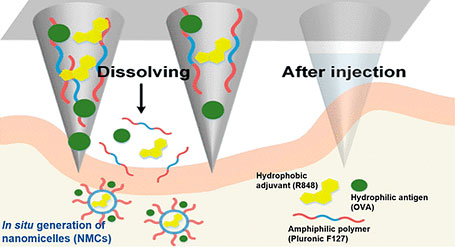
The researchers also reported that by using the phenomenon whereby 30 nm sized self-assembled nanoparticles are transferred to the lymph nodes after being attached to skin, they can improve the effect of the anti-cancer vaccine by transmitting an immune enhancer, which is not soluble in water, and can reduce the inflammatory response in a patient's body.
The research was supported by the Korea Research Foundation's Center for Advanced Research Support and ERC, and it was published on August 24th in the online edition of "ACS Nano", the global authority in the field of nanoscience.

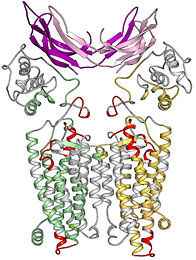 Prof. Ga-young CHUNG and her research team in the Department of Pharmaceutical Sciences at SKKU has investigated the action mechanism of Wnt signaling. Wnt signal transduction is a key signaling mechanism in our bodies that regulates embryonic development, cancer development, tissue regeneration, etc. with a type of hormone called Wnt. Wnt signaling is mediated through frizzled receptors, which are in the GPCR receptor group. The GPCR receptor family regulates various functions of the body including vision, olfactory, cardiovascular, brain, immune, and metabolic, and 40% of the drugs current in use act on GPCR receptors. For this reason, scientists who studied the action mechanism of the GPCR receptor group won the 1971 Nobel Prize in Physiology, the 1994 Nobel Prize in Physiology, and 2012 Nobel Prize in Chemistry. However, the action mechanism of frizzled receptors in the GPCR receptor group is not clear compared to the pathophysiological significance. Therefore, this study has elucidated the principle of binding Wnt hormones to Frizzled receptors and the principle of lower signaling through the fusion of various techniques such as structural analysis, mass spectrometry, computer modeling, and cell biological techniques.
Prof. Ga-young CHUNG and her research team in the Department of Pharmaceutical Sciences at SKKU has investigated the action mechanism of Wnt signaling. Wnt signal transduction is a key signaling mechanism in our bodies that regulates embryonic development, cancer development, tissue regeneration, etc. with a type of hormone called Wnt. Wnt signaling is mediated through frizzled receptors, which are in the GPCR receptor group. The GPCR receptor family regulates various functions of the body including vision, olfactory, cardiovascular, brain, immune, and metabolic, and 40% of the drugs current in use act on GPCR receptors. For this reason, scientists who studied the action mechanism of the GPCR receptor group won the 1971 Nobel Prize in Physiology, the 1994 Nobel Prize in Physiology, and 2012 Nobel Prize in Chemistry. However, the action mechanism of frizzled receptors in the GPCR receptor group is not clear compared to the pathophysiological significance. Therefore, this study has elucidated the principle of binding Wnt hormones to Frizzled receptors and the principle of lower signaling through the fusion of various techniques such as structural analysis, mass spectrometry, computer modeling, and cell biological techniques.

Lanthanide trivalent ions (Ln3+) embedded in an inorganic host solid are capable of "upconversion", which is the fascinating ability to convert multiple low-energy photons into a higher-energy photon. Upconversion luminescence suggests the promise of Ln3+-doped materials in emerging novel applications, such as energy harvesting for solar cells or deep tissue optogenetics.
However, it has been difficult to further improve the efficiency of upconversion because its efficiency and the upconversion emission spectrum are determined by the complex interaction between the host material and the lanthanide ion at an atomic level.
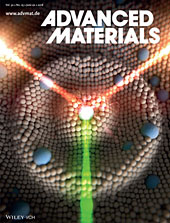 Prof. Donghwan KIM, a professor at SKKU Department of Chemical Engineering, has developed a novel host material that does not have a short-range order (1st coordination order) by liquefying and quenching the host material using a laser to maximize the host interactions, thus realizing highly efficient upconversion luminescence at a single-band wavelength.
Prof. Donghwan KIM, a professor at SKKU Department of Chemical Engineering, has developed a novel host material that does not have a short-range order (1st coordination order) by liquefying and quenching the host material using a laser to maximize the host interactions, thus realizing highly efficient upconversion luminescence at a single-band wavelength.
The results of this study are significant not only in scientific fields, but also in real world applications because the intrinsic limitations of the conventional host materials are overcome. This new material will be used in macroscale laser technologies and photonic integrated circuit devices.

The article entitled "Electrochemical Surface Charge-Inversion from Semi-Insulating Sb2Se3 Photoanodes and Abrupt Photocurrent Generation for Water Splitting" was published by Prof. Hyung-koun CHO and Youngbeen KIM (Integrated Ph. D program) at the Dept. of Energy & Environmental Science.
Sb2Se3 with the 1.3 eV band-gap and native p-type characteristic has been considered for the light harvester and absorption layer of photovoltaic devices. However, previous studies for PEC water splitting using pristine p-type Sb2Se3 have shown poor photocurrent and stability performance.
The professors found that the low PEC performance of the pristine Sb2Se3 is due to the energy band structure as a photocathode, so they designed a new synthesis method to prepare n-type Sb2Se3 via controlling the origin of the electrical conductivity.
In the article, the study proposed the fabrication design of n-type Sb2Se3 photoanode with high photocurrent performance for photoelectrochemical water splitting cells for the first time based on the formation energy of the point defects determining the electrical conductivity.
In particular, they electrochemically analyzed the origin of this explosive photocurrent generation and proposed the novel mechanisms using the typical capacitance concepts based on electrochemical analyses. As a result, the synthesized n-type Sb2Se3 exhibited remarkable photocurrent density of 5 mA/cm2 from the photoanode for the first time.

Prof. Insu KIM (School of Pharmacy) and his research team found a way to make compounds of pyridine and quinoline more easily with a cheaper price by using a new reaction process.
Until today, the Wittig reaction developed by Prof. Georg Wittig in 1954 was used in the field of organic synthesis and medicine production. However, it was limited to the formation of a carbon-carbon double bond through reaction with carbonyl, and chemical reactivity was relatively low and multiple steps were required. There is also a method of utilizing expensive transition metals such as palladium and rhodium, but it is troublesome due to the process of removing metals.
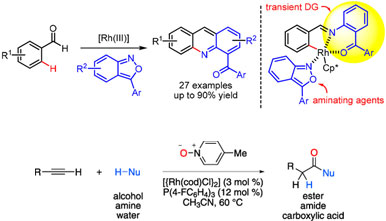
The selective alkylation of pyridine and quinolone developed by the research team uses a direct alkylation of carbon-hydrogen bonds present in pyridine and quinoline, unlike the traditional double bond formation reaction. Using the alkylation reaction that cuts off the carbon-hydrogen bond in the molecule, it is possible to synthesize a compound used in various medicines more simply and easily. The research resulted in the discovery of new reactivity of the Wittig reagent, which improved on the existing problematic issues.
The findings of this research were published in the September issue of the journal "Angewandte Chemie", a worldwide scientific journal that can set a new milestone in drug synthesis processes. The research was supported by the Ministry of Science and ICT and the National Research Foundation of Korea.

Prof. Kotiba HAMAD and Prof. Jinho JOO from the School of Advanced Materials Science and Engineering published a review paper in "Progress in Polymer Science", a highly prestigious journal.
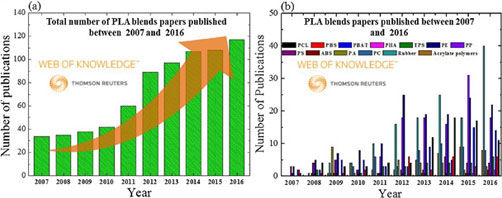
Polylactic acid (PLA) is a biobased product and biodegradable aliphatic polyester that has been studied for use in several applications over the last decade. Many properties of PLA, such as strength, stiffness, and gas permeability have been found to be comparable to those of traditional petrochemical-based polymers. PLA-based materials, on the other hand, exhibit a number of limitations for specific applications, such as a slow biodegradation rate, high cost, and low toughness. The frequent need to modify PLA by blending it with other polymers to achieve suitable properties for its intended consumer and biomedical applications has attracted significant attention in the last decade (Fig. 1). The review was therefore designed to present a detailed overview of the preparation, characterization, and applications of PLA blends and to provide information on the current status and future trends of these blends.
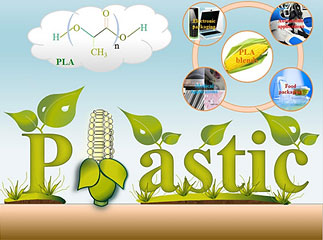
The review discussed the strategies used to process and fabricate PLA blends with biodegradable and non-biodegradable polymers. In addition, several concepts, such as structural, mechanical, rheological and thermal properties, biodegradability, and potentiality of these blends were outlined. The production of hierarchically porous materials using PLA blends for biomedical applications, such as tissue scaffolding was also introduced. The state of knowledge presented in this paper showed that the fabrication, properties and applications of PLA blends with biodegradable and non-biodegradable polymers will keep growing in the future.

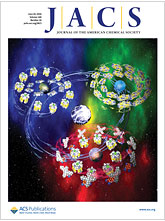 A research group led by Prof. Insu KIM made the front cover of the June edition of "JACS", the world's preeminent journal in chemistry.
A research group led by Prof. Insu KIM made the front cover of the June edition of "JACS", the world's preeminent journal in chemistry.
The group's research study on artificial molecular computers that could mimic advanced functions in the cell signaling system is of global interest. The artificial computing systems perform various math functions based on electrical signals in vivo. Their advanced functions are realized through chemical signals. In particular, the cell signaling processes can communicate and synchronize with each other in a precise organized manner to implement their specific functions. As such, much effort has been devoted to developing artificial computing systems analogous to biological signaling processes.
The research team was the first to report an artificial three-state molecular computer capable of performing advanced functions similar to those found in the biological computing process. This was achieved by control of molecular recognition and three electronic states via ionic chemical stimuli. Especially, it was also demonstrated that the system they developed was able to conduct a cascade reaction for a high-valued organic chemical and achieve functional polymer synthesis. It is also envisioned that artificial molecular computers mimicking the intravascular signaling system hold great promise in developing smart drug delivery systems that could be used for early diagnosis and treatment of many diseases.
This research was supported by a Basic Research Laboratory (BRL) grant from the National Research Foundation of Korea (NRF) funded by the Korean government (MSIP).





















